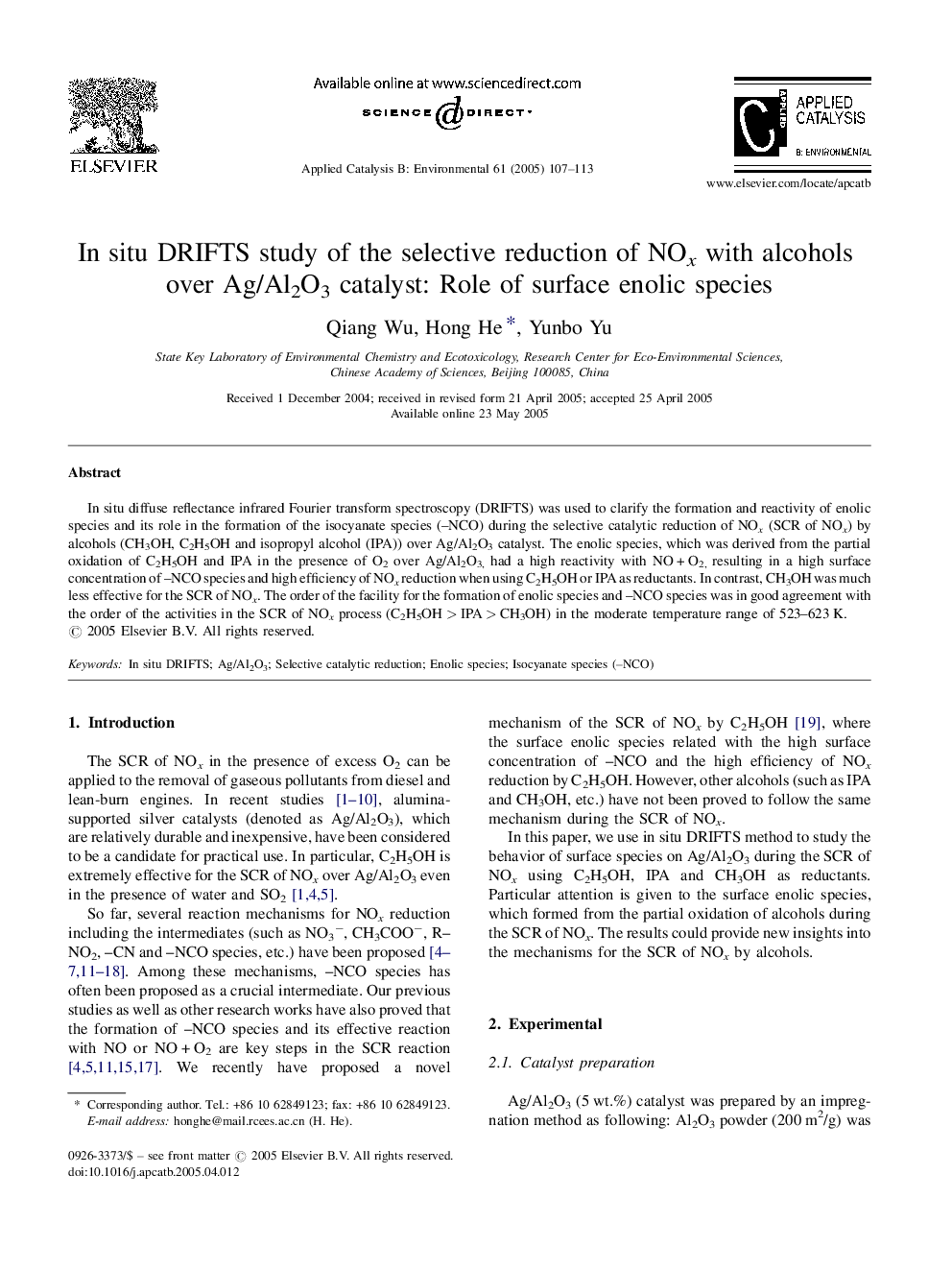| Article ID | Journal | Published Year | Pages | File Type |
|---|---|---|---|---|
| 9609785 | Applied Catalysis B: Environmental | 2005 | 7 Pages |
Abstract
In situ diffuse reflectance infrared Fourier transform spectroscopy (DRIFTS) was used to clarify the formation and reactivity of enolic species and its role in the formation of the isocyanate species (-NCO) during the selective catalytic reduction of NOx (SCR of NOx) by alcohols (CH3OH, C2H5OH and isopropyl alcohol (IPA)) over Ag/Al2O3 catalyst. The enolic species, which was derived from the partial oxidation of C2H5OH and IPA in the presence of O2 over Ag/Al2O3, had a high reactivity with NOÂ +Â O2, resulting in a high surface concentration of -NCO species and high efficiency of NOx reduction when using C2H5OH or IPA as reductants. In contrast, CH3OH was much less effective for the SCR of NOx. The order of the facility for the formation of enolic species and -NCO species was in good agreement with the order of the activities in the SCR of NOx process (C2H5OHÂ >Â IPAÂ >Â CH3OH) in the moderate temperature range of 523-623Â K.
Related Topics
Physical Sciences and Engineering
Chemical Engineering
Catalysis
Authors
Qiang Wu, Hong He, Yunbo Yu,
